King Country







By Paul Charman
Frustrations are expected to be aired at a public meeting attended by some of the hikers and hunters who aided the search for an Auckland hiker who disappeared in Pureora Forest on March 23.
Experienced hiker Judy Donovan,79, is presumed dead after becoming separated from a group of volunteers laying bait in the northern part of the forest. Her remains have not been found.
A meeting to discuss matters arising from the tragedy will be held next Wednesday in Waitomo.
The initial eight-day-search for Donovan was coordinated by the police and Land Search and Rescue, with support from volunteers but it failed to find any sign of the missing hiker.
Last month a farmer whose property was used as a base for the search, Allen Juno, and a hunter who took part in it, Dominique Fortis, called for improvements in search and rescue policy to help to prevent a future tragedy.
They argued that locals with knowledge of the area should have been encouraged to search for Donovan the first few hours, as this represented her best chance of survival in the extremely cold conditions.
Juno said the police search and rescue do a great job but are increasingly hampered by health and safety rules, privacy regulations and shrinking budgets.
At the meeting he intends to
gauge support for a rapid response group, formed from volunteers with experience of local bush conditions.
“This could be deployed at short notice to assist Police and Land Search and Rescue (SAR),” Juno said. “These people will have local knowledge and experience, will be able to work with police and SAR.”
Juno said forming such a group would address concerns and frustration of public and current and former land SAR members including:
That experienced locals were stood down on Saturday night (when Donovan went missing) and at subsequent times during the search.
A perceived lack of transparency and communication.
Lack of media both traditional and social coverage – police did not release the location of the search area to the media.
Offers of help from experienced locals who knew the area being declined.
A late update of the fact that a call was made by Judy Donvan from her mobile on the Saturday night she went missing.
“This meeting will not be a blame game but rather a chance to see how we can assist in the future,” Juno said.
“We cannot ask questions of the police but they will be invited to volunteer what information they can within the Privacy and Health and Safety Act.”
The matter was first aired in the King Country News in a carefully worded letter from Judy Donovan’s daughter, Nic. She wrote to thank locals for their dedication in searching for her mother, but also pointed out that the police had to curtail the
search on the first day.
This was due to the fact that the officer responsible for radio communications had to go off duty as he had already worked eight hours. Juno said a group of local volunteers could complement future search efforts in the area.
Not only did they know the lay of the land (in Pureora Forest), but they also would not need to be constrained by regulations, including the Privacy Act, Health and Safety and a lack of resources police faced due to shrinking budgets.


These classic brick cottages, built in the 1970s and 1980s, are available to occupy under an Occupation Right Agreement (ORA) basis, starting from $360,000. There is 50/50 shared capital gain benefit if the ORA value has increased when you leave.

Peter
The Mōkau Museum’s main winter display, which tells the story of a famous writer who was raised in the district, is drawing much attention from the travelling public.
Museum coordinator Kath Jennings says June Opie seems to be well known to many travellers on SH3, who break their trip at the museum and tell staff what they remember about her.
Opie was (1924 – 1999) was a survivor, writer and clinical psychologist. She is also credited with being an key early advocate for the rights of the disabled.
“One thing people appreciate is the opportunity to watch June speak on a video,




Book your advertising space janine@goodlocal.nz

News/Editorial
Roy Pilott editor@goodlocal.nz 027 450 0115
Andy Campbell andy@goodlocal.nz 021 0232 1666
Paul Charman paul@goodlocal.nz 027 405 9038
Sigrid Christiansen sigrid@goodlocal.nz 022 080 6141
Advertising Director Janine Davy janine@goodlocal.nz 027 287 0005
Owner/Publisher David Mackenzie david@goodlocal.nz Office 07 878 1188 reception@goodlocal.nz
telling her own story,” Jennings said.
As a young adult intent on her OE, Opie contracted polio during a voyage to London. Two days after arriving she was admitted to St Mary’s Hospital and spent 10 weeks in an iron lung.
She then spent over a year in a plaster cast, and a total of two years in the hospital. She learned to walk with crutches and callipers, which was considered “a remarkable achievement given the extent of her initial paralysis”.
In 1949 she sailed back to New Zealand and at Auckland Hospital was told she would spend the rest of her life living in institutions, at which point she left the

By Paul Charman
Beach users on the Mōkau spit are not being provided access to portable toilets there because of the sacred status of the Te Naunau Sandspit as an urupā.
Waitomo District Council arranged for portaloos at the sandspit for three weeks over the height of the holiday season, but none were provided in the 2023-2024 holiday due to cultural concerns.
“Council had previously obtained funding from the Ministry of Business, Innovation and Employment’s Tourism Infrastructure Fund for portaloos on Tokopapa Street, Mōkau, during the summer period,” Waitomo District Council general manager Alex Bell said.
“Whare Mokau Ki Runga did oppose


toilets on Tokopapa St, given the cultural significance of the area.”
Bell said the council did not make an application to locate toilets on the sandspit over the most recent holiday period.
“It was considered that given there are three sets of public toilets in Mōkau, there was not a need for additional toilet facilities.”
But it appears not all beach users see it that way. Property owners Peter Cowley and Rachel Tapuikore, say some now defecate on the track leading to the beach access.
“This is Mōkau village’s main beach access, so a lot of people come here. You could argue that there are public toilets in the main street but people coming up from the beach can’t seem to hold on long enough to use them,” Cowley said.
hospital and moved first to her mother’s home and then to a friend’s spa-hotel in Helensville. In 1954 she graduated from the University of Auckland with a BA in philosophy.
She worked as a speech therapist and clinical psychologist, despite prejudice about her disability, and then had a research post with the Crippled Children’s Society, before working in a prison and in a boys’ welfare home.
In 1957 she published a memoir Over My Dead Body, to thank the many hospital staff and others who had helped her during her time at St Mary’s. It became an international best-seller.
She campaigned for disability rights, was one of the founders in 1971 of the Association of Disabled Professionals, and spoke at Speakers’ Corner in Hyde Park to oppose, successfully, Margaret Thatcher’s government’s plan to tax Mobility Allowance.
She established a trust which supports the purchase of IT equipment for people with physical disabilities in New Zealand.
I really enjoyed Mr Dickinson’s thought provoking letter (The News April 4) and he was right to say that it is the people that make a place special.
I’ve never thought of us as being a stop off town but that’s probably because I live here. Sad to say, it would take a miracle for some people to put away evil practices, and there’s even a song from an old movie called South Pacific which tells of this. The very first verse says “You’ve got to be taught to hate and to fear you’ve got to be taught from year to year, it’s got to be drummed in your dear little ear, you’ve got to be carefully taught.”
I don’t believe we’ll ever be rid of evil, it’s how we respond to it that matters, whether we let it infect us, or whether we turn our backs on it to keep up the sound values that work within our souls from year to year. I have no desire to go roaming overseas as some people do.
Maybe Te Kuiti will always be a small town where people are happy to stop and grab fuel and a pie, given we’re just a valley with only hills left to build on for the most part, and who wants to build on a hill? Evil is found globally and the best we can do is to lock it up and throw away the key; then head on down for fish and chips!
A Graham Te Kūiti



For a century, iwi battled the establishment of a subdivision “on the bones of our tūpuna” at Mōkau. Now some of those houses are battling erosion. Sigrid Christiansen looks at the controversial history of Te Naunau.
Sigrid Christiansen
Waitomo District Council has been told it should plan a managed retreat from the Mōkau spit and people living there should leave.
The land has been the subject of dispute since the 1920s, according to a 2014 Waitangi tribunal report on the management of the Mōkau river mouth.
It has been in the news recently after a Taranaki businessman was fined for unconsented work on a rock wall on the spit.
For a century, mana whenua and custodians of Te Naunau burial ground in Mōkau have claimed the land should never have been sold - because the whole area is an urupā.
But in that time more than three dozen houses were built.
“Te Naunau was stolen by the
Crown, illegally given to Waitomo council, then sold off by them for profit.
“The land was taken wrongly and it should be returned.”
Mārama Henare-Waho said.
Henare-Waho, speaking on behalf of her whānau, Te Paerata, said houses should not have been built in the first place.
“They’re living on the bones of our tūpuna, and they should leave.”
Henare-Waho said the rock wall was part of a larger historical story.
“The bach owners conveniently forget that they bought a property on a sand dune – now they’re trying to stop the sea from coming in,” she said.
Instead, “the council should put in place a managed retreat”.
The same message was reflected
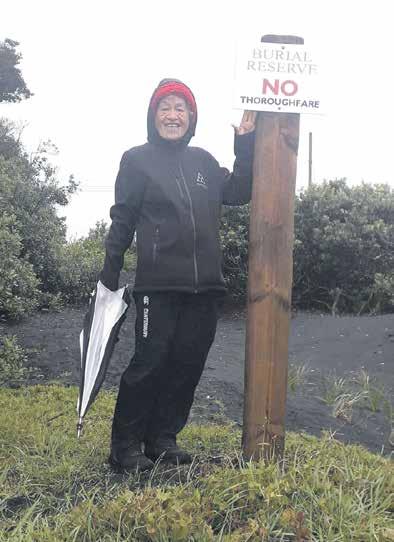
in a report titled Cultural Impact Assessment Report – Digger Activity at Te Naunau, Mōkau, 2023, submitted by Te Paerata during the recent court case.
The whānau are descendants of Teremai Ngahau Whāriki Te Ripo and Te Ripo Te Huia, who were interred in the burial ground and they say the whakapapa connection gives the mandate to care for their ancestral lands.
Māori have advocated for the return of Te Naunau since the appearance of squatters there in the 1920s, Henare-Waho said.
A Waitangi Tribunal report, ‘The Environmental Management of the Mokau River Mouth,’ which contained a case study of Te Naunau – said concerns about the urupā were first recorded as being voiced to the Government a hundred years ago.
“Local Māori appear to have first sought protection of Te Naunau by the Crown in 1921,” it reports.
That year, the then Minister of Lands, DH Guthrie, spoke with “local Māori,” and later wrote to the Mōkau Harbour Board stating that the Ministry “had inquired into the position regarding the area of sandhills near the Mōkau Heads which the natives desired to be set apart as a burial ground.”
The Ministry concluded that the land was “unsuitable” for building on.
The report says two men, Pahiri Wiari and Tanirau Eria lodged an application in the Native Land Court in November 1923, asking for the title to be investigated.
Henare-Waho is the greatgranddaughter of Teremai Ngahau Whāriki Te Ripo, the last person to be interred at Te Naunau in 1953.
Teremai spoke at the first Māori Land Court sitting relating to Te Naunau in 1953 – she described the burials of her close family members at the urupā, including her husband, who died in 1935.
Incidents of Māori land dispossession in Mōkau were described by the Waitangi Tribunal as “some of the most brazen acts of bad faith identified in this inquiry”.

An inquiry covering the King Country referred to the “Jones Affair” in which land Māori had agreed to lease was sold from under them to a Joshua Jones who later lost it in a failed business deal.
“The owners of the Mōkau Mohakatino block were severely prejudiced by the Crown’s actions in respect of the Joshua Jones lease.
“They had expected that, by entering into a commercial arrangement with Jones, they would enjoy economic benefits from their land while also retaining control and ownership of that
land. Instead, as a result of the Crown’s treaty breaches, they lost ownership of their land entirely. Approximately 56,000 acres were alienated from their ownership, leaving some owners effectively landless as a result,” the Te Mana Whatu Ahuru report said.
Henare said Te Naunau had always been wāhi tapu, a sacred place, and no one ever agreed to sell it.
“The whole sand spit, not just the smaller burial reserve, is, and has always been an urupā.”
• Plants, not rocks ‘the only option’ – See Page 4






The custodians of the burial reserve at the Te Naunau sand spit in Mōkau say dune planting is the only option for them – and that it is going well.
Marama Henare-Waho said Te Paerata whānau manage the area using dune planting, not solid structures which, they argue, accelerate erosion.
“From our point of view, managing erosion via sand dune planting is the only option for us, not a rock wall.
“This is our way of managing the erosion. It involves planting up the area above high tide mark, with known sand dune building plants like spinifex (kowhangatara) and pingao.”
“They are already using planting at Seaview camping ground and the Mōkau river with some success.”
Henare-Wano says at the burial reserve area this plan has been already put in place, supported by Stacey Hill from Coastcare, who works with Waikato Regional Council. A Cultural Impact report by Te Paerata whānau points to earlier photos showing

Te Naunau covered in vegetation – which it says would have mitigated erosion.
“We work with, not against nature – but we are not sitting back and doing nothing either.
“We understand and accept that river mouths change. If [sea deities] Tangaroa and Hinemoana are going to take the urupā away, they will.”
“Erosion is a natural process. It happens a lot. We are aware of this. Our ancestors were aware of this.”
They knew the urupā was in the dunes, and therefore subject to the changing environment.
She said that if koiwi –bones – were uncovered, they would be reburied at another place, according to tikanga. While there were never headstones placed over the graves, this was in accordance with tradition, she said.
“We manage the burial reserve in accordance with our values and beliefs. Before houses were built on Te Naunau, the sand spit was not fenced. There were no head stones to mark where people were buried.”

Police have charged a 20-year old woman after an early morning wake up call for a Te Kūiti resident resulted in a car and money being taken.
And a 13-year-old female was also caught by police after the stolen car, clocked at 130kmh just south of Te Awamutu, was abandoned and a search started.
One has been remanded in custody and the other has been referred to Youth Aid.
Police say a woman they described as elderly, woke to find a hooded woman in her bedroom at 3am last Friday.
The intruder, whose face was covered, asked for keys to a car and took $425 and a card from a wallet.


The card was used to pay for petrol and later in the day police recorded the vehicle speeding.
They say the driver refused to stop, and the vehicle was found soon after, crashed on Pokuru Road.
A police dog unit and other police staff then found two women.
A 20-year-old female was charged with unlawfully taking a motor vehicle and three counts of using a document unlawfully. She was remanded to appear in the Te Kūiti District Court on August 8, where she will face additional changes.
Council controlled organisation Inframax Construction Ltd has secured the Waitomo District Council road maintenance contract for another term. Valued at $48.2M over five years, the contract includes an annual resealing programme, road maintenance, drainage renewals and emergency first response.
The Lines Company has announced it will invest $25 million into the region’s electricity network in this financial year. “The bulk of our network was built in the 1970s and it won’t go forever,” Chief executive Mike Fox said. The company had earlier announced it would increase annual support for the Maru Energy Trust from $150,000 to $450,000. The Trust helps homeowners insulate and heat their homes.
Ruapehu Mayor Weston Kirton and council Chief Executive Clive Manley have met senior defence force officials to discuss how the council can support their homes for families development plan at the Waiouru training base. The first $75 million stage of the Homes for Families project will see the defence force build 50 homes in partnership with local iwi Ngāti Rangi.

By Chris Gardner
Waipā couple Ian and Danny Kennedy have lost their home and livelihood after they failed to secure an injunction to stop New Zealand Post terminating their rural delivery contract.
The Kennedys sold their Te Awamutu home last month and moved to the South Island, prompting a call for State Owned Enterprises Minster Paul Goldsmith to open a ministerial inquiry into New Zealand Post’s handling of the case.
Goldsmith’s office passed the request from ProDrive chief executive Peter Gallagher onto Chris Bishop.
The Kennedys were contracted to sort, process, uplift and deliver “all mail and other items for delivery” for the Tamahere RD3 rural post run from April 1, 2019. They invested $500,000 into the business which ran six vans with five staff.
Their contract was cancelled on November 10, 2023, after they asked why other contractors were sorting, processing, uplifting and delivering mail in the Tamahere RD3 postal district.
Gallagher, who is representing the couple, wrote to Goldsmith and NZ Post chair Carol Campbell in June and followed up with a second letter last week to TaranakiKing Country National MP Barbara Kuriger alleging “serious matters of poor conduct and management malaise within New Zealand Post” and copied in Goldsmith. Gallagher called for a fair and equitable settlement payment from New Zealand Post to Danny and Ian Kennedy as well as an inquiry “into the poor conduct and culture within New Zealand Post, which consistently appears predicated upon the
tactics of deny, lie, bluff, block and bully and delay”.
He wrote: “the shameful treatment of the Kennedys has already been extensively covered by reputable media outlets and journalists over the past two years, without any trustworthy answers from New Zealand Post. We would add that you have personally experienced dishonesty from
senior New Zealand Post executives… this is completely unacceptable to the NZ public, who have contributed over $200 million of subsidies to NZ Post over the past 10 years.”
Gallagher urged Kuriger, who he had previously discussed the matter with, to press the relevant ministers and representatives of New Zealand Post to
settle fairly with the Kennedys and to “put its house in order”.
Danny Kennedy told The News she supported Gallagher’s move.
Kuriger told The News “there are definitely questions that need answering”. The News has sought comment from Bishop and NZ Post chair Carol Campbell.







Te Kūiti tip - will it stay or be closed like the rest of the district’s landfills? Andy Campbell takes a deep dive into the rubbish and looks at the numbers.
Whether Te Kūiti decides to keep its last landfill will depend on the turning tides of rubbish, market factors, and sludge.
The council long term plan decision was to investigate all options for the future of the landfill, but to implement a final decision by 2026. According to council documents the landfill’s resource consent expires on September 24.
A total of $3.7 million budgeted for the landfill’s expansion, new cell development and a gas flaring equipment project is on hold pending the review of landfill operations.
The council’s wastewater treatment ponds have nearly reached capacity, with decades of sludge accumulated. Disposing of the sludge to the landfill is considered the most economical approach.
This will also involve a special consultative process with the community, planned for after the LTP’s adoption.
Tonnage to the landfill has decreased over the past five years primarily because out-of-district wastes from South Waikato and Ruapehu district councils are no longer disposed at the site. Waste flows are price-sensitive and are not constrained by geographic boundaries. Variance in regional gate fees, preferential pricing for commercial operators and acceptance of special wastes influences where waste eventually settles.
Similarly, waste disposed at the landfill does not represent all waste generated in Waitomo District, nor is it comprised only of waste generated within the district.
In the financial year 2022-23 a total of 7810 tonnes of waste was received. The two main sources were industrial commercial and institutional waste (3133 tonnes) and construction and demolition waste (1970 tonnes) Of the total disposed, 37 per cent was from out-of-district (2893 tonnes).
Revenue received from the landfill was less for general refuse charges as waste volumes deposited at the landfill were reduced. This includes less sludge from the wastewater ponds than forecast. This was partly offset by increased green waste revenue.
Sewerage pond sludge could be disposed of through mixing with other rubbish and tipping it into the new cell development.
Political changes could also benefit the council’s delayed decision. The waste levy is currently set at $50 a tonne on waste disposed at a Class 1 landfill – like Waitomo’s. The rate will rise to $60 this month.
New waste legislation is to be enacted in 2025. All Councils receive a share of the waste levy revenue irrespective of what waste infrastructure they may or may not own.
Waitomo District Council revenue from the levy was $75,000 for the 2022-23 year and is expected to exceed $140,000 by the 2024/25 year. If the waste levy continued to increase beyond 2024 then council could be able to provide waste services and infrastructure that would previously be deemed unaffordable.
The change in central government may
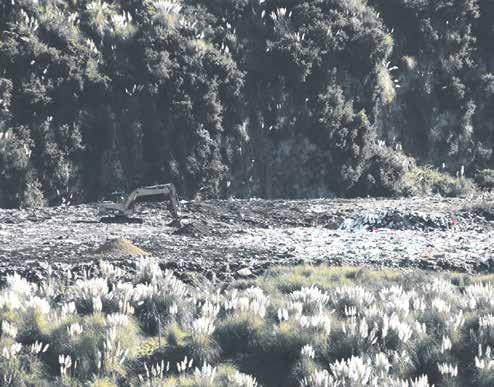
also impact some of Waitomo District Council’s proposed actions or timelines.
Of the general waste disposed at Te Kūiti, theoretically 43 per cent or 3,378 tonnes per year could be diverted from landfill by recycling, recovery or composting. The two biggest components that could be diverted are food waste (864 tonnes per year) and clean fill (733 tonnes per year).
In the year to June 2023, 416 tonnes of kerbside waste were collected, with organic material, primarily kitchen waste, making up 51.1 per cent of the total for urban and rural collections. Kerbside organics consist
of kitchen waste 87 per cent, green waste 5 per cent, other organics 8 per cent.
The next largest components were sanitary paper 14.4 per cent, plastics 10.6 per cent and paper 9.3 per cent. Overall, 59 per cent by weight, of materials in kerbside bags could have been recycled or composted. If kitchen waste can be removed from the kerbside waste stream either by kerbside organics collection, or home and community composting, it may be possible to reduce the kerbside rubbish collection to fortnightly as most of the malodorous waste has been removed.
By Mary Anne Gill
An internationally acclaimed retail expert says small town retailers should be open, welcoming and convenient in response to testing economic conditions.
First Retail Group managing director Chris Wilkinson is a specialist in unlocking potential in towns like Te Kūiti and Ōtorohanga.
His solutions have worked around New Zealand – including Nelson, Queenstown, Invercargill, Kaitaia and Auckland suburbs – Australia and the United Kingdom.
Speaking at a Chamber of Commerce function this week in Cambridge, Wilkinson said towns needed to look vibrant and bustling in the face of economic challenges.
“A town centre is a very important part of the socioeconomic environment,” he told The News before the meeting. He gave the example of how he arrived in Cambridge at 6am and was greeted warmly and enthusiastically by a local café.
“I can’t tell you just how important that sort of thing is,” he said.
Working together and championing your own communities was a crucial step. Be positive with shoppers, he said. “No-one’s out shopping for negative vibes.”

Earning the visit and sale had never been more important so “inspire and enthuse.”
The Chamber of Commerce brought Wilkinson to Cambridge to speak to retailers about navigating the ever-changing retail landscape. Among those present were Te Awamutu Chamber chief executive Shane Walsh, mayor
Susan O’Regan, deputy mayor Liz Stolwyk and Cambridge Community Board chair Jo Davies-Colley.
“Everyone is in the same situation across the country,” he said.
Customers were spending less,
the cost of doing business had gone up and there was uncertainty in the economy.
But communities had the answers.
Retailers could look at individual initiatives and develop their own niche.
“Something you can own and dominate in.”
Converting the visitors who attended events in communities was “domestic tourism” at its best, said Stolwyk, who manages Mighty River Domain at Lake Karāpiro.
There were 100,000 people through the domain annually
and with other events at places like Mystery Creek, attracting them into towns had to become a priority.
Others would happily take your audience and goodwill, said Wilkinson who encouraged retailers to reset the narrative and work collectively.
Local businesses were competitive, unique and filled with choice and experiences.
Get customers to be your advocates by dominating in digital visibility, he said.
“People are looking for good news stories so tell them.”
By Chris Gardner
Waipā mayor Susan O’Regan is calling on the Department of Conservation to dig deeper into its pockets and help save Sanctuary Mountain Maungatautari from closure.
O’Regan accompanied sanctuary chief executive Helen Hughes and conservation minister Tama Potaka on a tour of the mountain in May when it was revealed to the minister a cash flow crisis could result in the closure of the world’s largest predator proof enclosure.
O’Regan, whose council has spent $3.2 million on the project in 10 years, has been advocating for more DOC support for nearly a year.
“Too many New Zealanders aren’t likely to get the privilege of seeing kaka or watching wood pigeons so what is the value of that to New Zealand? The Government needs to be honest about their value, and I would like to see the Department of Conservation step up a little more,” O’Regan said.
The 20-year-old project, which costs $5000 a day to run, was initially funded by the department, Waipā District Council and Waikato Regional Council.
But in recent years DOC has moved away from funding operational costs, cutting $1.5 million from the project over four years, and focussed on specific projects on the mountain.
Sigrid Christiansen
Piopio College
principal Rakesh Govind has resigned to take up another role, partly to be closer to his parents.
“I’m heading up to Glenfield College in Auckland, on the North Shore.”
“I’d been planning to stay on in Piopio for another year or two, but this position came up.”
He will start the new role on September 9.
“My parents live on the North Shore and they are getting to the age where it will be nice to be closer to them. My dad is 85 and my mum is 75, so I want to be able to give that support.
He appreciated his time in the King Country town.
“Piopio has been a great community to work with.”
He said he was proud of what had been achieved in his time at the college, especially around the local curriculum.
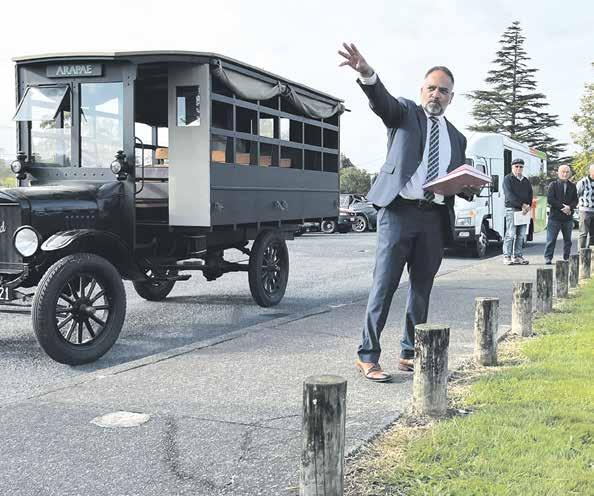
Govind remains excited about the plans for next year: a new administration building to go up in January 2025, and a new shearing shed, to complement the college’s agriculture programmes.
“The school is in good shape for whoever takes over,” he said. “I will miss the students.”
Piopio Board of






Trustees member Shaun Carter said that during his tenure, Govind made significant contributions to the school community.
“We appreciate his dedication and hard work,” Carter said.
While Glenfield has 700 pupils contrasting with the 140 at Piopio, Govind isn’t worried, having already taught in bigger schools with over 2000 students, also in Auckland.
Glenfield’s previous principal, Paul McKinley, died in February. Carter said details about future leadership plans at Piopio would be confirmed in the coming days.
Sigrid Christiansen
Slime and a ping pong challenge were two ways Pukenui seniors delighted younger classmates, at the school Matariki festival just before the school holidays. There were as many as 300 people present.
Principal Raewyn Jackson said Year 7 and 8 students ran stalls based on activities they invented.
“They did the mahi, not us.”
Starrez Strickland, 12, and her bestie Furisha Winikerei created the slime project.
“We did slime because heaps of kids love to engage with it – we were so excited and happy to see them playing with it. It came in every colour, and Starrez’ favourite was an ombre of blue, pink and white. They sold 75 packets of slime.
Josiah Bradley, 11, and his friend David King raised $91 with the ping pong challenge. Festival-goers stood behind a line trying to knock over a tower of six disposible cups with a ping pong ball.
“We were inspired by arcade games,” they said.
Josiah loved handing out the prizes - “I gave them all big handfuls of lollies,” he said.
Jackson said the older kids had been wonderfully patient and kind to the younger ones.
“They’re modest kids, but they come to the fore when required.”
Jackson’s highlight was the art exhibition. The school’s eight classes, and the one admin area, each focussed on learning about a particular Matariki star and its cultural meanings: “the full nine” all up.
We are proud to announce the launch of the Graymont Carbon Reduction Fund , an innovative, grass-roots initiative designed to support the development of carbon-reduction initiatives in the communities across the globe that we call home.
We are proud to announce the launch of the Graymont Carbon Reduction Fund , an innovative, grass-roots initiative designed to support the development of carbon-reduction initiatives in the communities across the globe that we call home.
The fund’s role is to support projects focused on:
We are proud to announce the launch of the Graymont Carbon Reduction Fund, an innovative, grass-roots initiative designed to support the development of carbon-reduction initiatives in the communities across the globe that we call home.
• Protecting the environment by the responsible use of resources
The fund’s role is to support projects focused on:
The fund’s role is to support projects focused on:
• Reducing our carbon footprint through increased energy e iciency
• Protecting the environment by the responsible use of resources
• Protecting the environment by the responsible use of resources
• Reducing our carbon footprint through increased energy e iciency
• Reducing our carbon footprint through increased energy efficiency
• Developing and maintaining natural, biological ‘carbon sinks’ such as agricultural land, forests or peat bogs that act as a natural o set for carbon
• Developing and maintaining natural, biological ‘carbon sinks’ such as agricultural land, forests or peat bogs that act as a natural o set for carbon
• Developing and maintaining natural, biological ‘carbon sinks’ such as agricultural land, forests or peat bogs that act as a natural offset for carbon
If you have a project idea that relates to any of these topics, the GCRF is looking for you!
If you have a project idea that relates to any of these topics, the GCRF is looking for you!
Graymont's mission is contributing to a decarbonized world by providing essential lime and limestone solutions.
Graymont's mission is contributing to a decarbonized world by providing essential lime and limestone solutions.




If you have a project idea that relates to any of these topics, the GCRF is looking for you!
For additional information, please contact
For additional information, please contact Craig Lee - clee@graymont.com
For additional information, please contact
Ōtorohanga
Police attended two family harm incidents last week.
July 8-9: A vehicle was broken into on Gradara Ave. The intruder damaged the ignition barel, but did not succeed in starting the vehicle.
July 9: At about 11.15pm a woman in her ninties living in Hinewai St heard a crashing sound. The next morning she found a hole in her lounge window and a stone sitting on the carpet. “Obvously such an incident would be disturbing for anyone, but perhaps more so for an elderly person. Actions like this are despicable, and police are incredibly disappointed with whoever did this,” sergeant Jimmy Walker said.
July 13: At about 7.36am a blue Toyota Hilux hit ice and rolled onto its roof while travelling on Kāwhia Rd, near Honikiwi. The driver lost control on a lefthand corner, his vehicle then skidded off the road, into a ditch and a farm fence. Of five occupants, three received minor injuries and one moderate injuries, the last person being treated at Waikato Hospital.
Kāwhia
Between June 6 and July 11, 150 bales of silage were vandalised and ruined at a rural address on Mangatoa Road, Marokopa. Somebody had climbed over the bales and slashed the top of the plastic wrap with a knife and that resulted in the bales becoming mouldy. Sgt Walker said the cost of what was lost would have been significant.”
July 13: At 8.50am a burglary was reported at a Tainui St address. Rather than items being stolen, police said items had been left there, including knives, axes, a beer bottle and pruning shears.
July 9: At about 4.15am a food market on Moa St was broken into. It is believed up to six offenders arrived in a vehicle stolen earlier from Taumarunui.
A window was broken, drinks and ice cream stolen and considerable damage done to the shop. A 16-year-old Auckland youth was later arrested and will face charges in the Hamilton Youth Court relating to unlawfully taking a motor vehicle, burglary. He has been remanded in a secure facility run by Oranga Tamariki. The 16-year-old was also charged with interfering with two vehicles in Te Kūiti.
Overnight on July 14 and 15 four cars reportedly hit ice on SH3, between Te Mapara and Mahoenui. In each case the vehicles skidded off the road and were moderately damaged, but none of the occupants were injured.
Benneydale:
One family harm incident was reported.
Te Kūiti
Police attended three family harm incidents and dealt with two missing person reports.
July 8: A shoplifter allegedly took $30 of meat from Super Value between 9.30am and 10 am.
July 8-9: A utility vehicle was broken into, the vehicle’s ignition damaged and a wallet stolen.
July 10: At 5.57pm the brigade was called out following an automatic fire alarm activation at a commercial property in Taupiri St.
July 11: At 11.49 am the brigade was called to support Benneydale at a road crash but they were stood down before arrival.
July 13: At 8.16am the brigade supported Piopio after a car left the road on SH3. At 9.51am they were called out again to support Piopio at crash scene near the first one.
July 14: At 8.45pm the brigade was called to a transformer fire on Tawa St. They cooled the transformer down with water to make it safe for Lines Company staff to assess.
July 15: At 2.21pm the brigade was called out to support Benneydale following a single vehicle crash on SH30.. They were turned around before arriving.
Ōtorohanga
July 13: At 7.35am the brigade was called out after a vehicle rolled on Kāwhia Rd. The occupants received minor injuries. Within about five minutes of this call the brigade was called to a medical case in Ōtorohanga, but stood down before arriving.
At 11.23am they were summoned to a kitchen fire in William St, where a pot was left on a stove. The kitchen was badly damaged. At 10.11pm the brigade was called to a fire in the back yard of a house in Main North Rd. The scene was left under the supervision of the property owners.
July 16: At 11am the brigade was called out after a ute rolled on Ngutunui Rd. There were minor injuries to the occupants.
Piopio
July 13: At 8.16am Piopio and Te Kūiti responded after a car crashed off the road due to hitting ice, on SH3, just south of the eight-mile turnoff. There were no injuries. At 9.51 am, shortly after leaving the scene, the brigade was called to the same spot to assist the driver of another car which had lost control in the ice.
Checks will be made on the siting of warning signs followed a third crash on a railways crossing in the last 12 months.
The two most recent incidents at the level crossing on SH30 at Mangapehi, near Benneydale, were days apart.
All three incidents in the last year have involved drivers who were tourists.
Benneydale fire chief Murray Patterson said a car crashed into a ditch, ripping off a tyre in the process last Thursday.
“We just did scene control and directed traffic while police managed the crash scene,” he said
Then on Monday afternoon the brigade returned to the same spot where a vehicle had collided with the crossing.
“They hit the same barrier but this time both occupants of the car were hurt,” Patterson said.
Fire fighters put the injured pair on stretchers, got them out of the rain and provided first aid and patient assurance while an ambulance was on its way.
Of the three incidents Patterson said “they just seem to go too fast, hit the arm tower and bounce across the railway line”.
He said he would assess the ‘speed warning’ and ‘railway crossing’ signs, to see if they need to be moved.


By Roy Pilott
A new study has modelled which habitats might be most vulnerable to gold clam infestations – and suggest they are here to stay and finding the country more hospitable because of climate change.
It suggests the focus should be on stopping spread rather than eradication.
The tiny pest, which can self-fertilise and lay 70,000 eggs a year, are in a stretch of the Waikato River at Karāpiro.
Corbicula fluminea is a highly invasive freshwater mollusc, which has been restricted to the Waikato since being found last years, but there are fears it will spread and water users have been targeted in a campaign.
The Ministry of Primary Industries was criticised by The News over its communication having become aware the clams were in the Waikato River last year and it was subsequently criticised for a “lack of haste” in not communicating with partners and shareholders with the same urgency seen around the mycoplasma bovis outbreak.
Parliament’s Environment Committee suggested it appeared MPI had prematurely eliminated the option of eradication,
The new study’s lead author, University of Otago student Rose Somerville, completed the paper alongside Cawthron Institute freshwater scientists Calum MacNeil and Finnbar Lee while on placement at Cawthron

as a summer scholar.
They found the most accommodating habitats in the North Island were in northern Waikato, Auckland, Northland, Bay of Plenty and Hawke’s Bay. In the South Island the most suitable habitats included Marlborough, North Canterbury and Christchurch.
The details of the report were released on Monday.
Somerville said there was an urgent need to identify suitable habitats for the species beyond the Waikato, given the high probability of spread.
“Our aim was to use modelling to identify habitats in different parts of Aotearoa New Zealand that would be the most suitable for the gold clam to thrive in by looking at environmental variables associated with the species’ distribution here and in other parts of the world where it lives,” Somerville said.
“We looked at environmental variables such as temperature, slope, elevation, the sand content of the river/lakebed, and the pH of the water.
“The value of using a statistical model is it gives us a bit of a head start on the invasion. By identifying freshwater habitats with similar conditions to those where the gold clam occurs internationally, we can allocate resources to high-risk environments.”
“Worryingly, we found temperature to be a key driver of habitat, with the gold clam preferring warmer waters, suggesting that
climate change may result in more of the country becoming suitable habitat for the clam.”
Calum MacNeil, an invasion ecologist at Cawthron Institute, said the gold clam is a major threat to New Zealand’s freshwater ecosystem health.
“Because it’s a recent arrival, the long-term impacts of invasion are yet to be determined, but there’s a lot of evidence to suggest gold clam could outcompete other species including our native freshwater mussel species the Kākahi.”
“Beyond the damage to ecosystems, Gold Clam has also been reported to cause damage to infrastructure by biofouling things like water treatment systems and power plants.”
Finnbar Lee said the study suggested the focus should be on preventing the species from gaining a foothold in new habitats.
“Eradication is a very difficult task once the species has established, so we should focus on preventing it from spreading in the first place,” Lee said.
“Our study only considered where the clam is most likely to spread, but another important consideration is how the clam may move between catchments, for example spread via fishing gear, boats or trailers.
“Identifying the potential dispersal pathways between catchments will further inform where management should be targeted.














































Thursday, July 18, 2024



George Dodson on his way to being crowned the 56th Young Farmer of the Year on Saturday following a nail-biting final in Hamilton. George secured the win following three days of gruelling challenges against six other finalists, including Waikato’s Dennis Main from Piarere. Read more about Dodson and the finals night on Page 11.
ALSO INSIDE:
Early lambs
The lambs are coming – and Paul Charman headed to Keith Edkins’ Rangitoto Rd farm last week to see them. See story Page 2.
Another test win
The All Blacks beat England – and our shearers beat England and France. We look at more success for Jack Fagan and David Buick on Page 7.
Treasure in timber
Those old logs at the back of the farm might be worth a pretty penny.
See what Jim Rogers has to say on Page 10.







hoped favourable weather will provide a good start in life for lambs like these,
property.
Paul Charman
Early lambing is underway on King Country farms, including Keith Edkins 40ha property, in Rangitoto Rd, Te Kūiti. Edkins farms alongside daughter Michelle – who works in town – and runs a further 16ha next door, “just as a hobby”.
A walk across their properties provides beautiful sweeping views across the Te Kūiti township, and there are already plenty of lambs to see.
The family run Coopworth ewes, which were put to a Poll Dorset ram, with a breeding cycle that aimed at the early schedule for lambs.
“We have our first draft at the end of October; we try to get rid of our lambs
early while the money is better,” Keith says.
“It’s been a great year so far. One of the best for grass growth and we’ve also had what I would term fantastic weather of late. There have been few wet days till now.
“Generally we have the better weather early on in this part of the world. Our theory is that it’s generally not till about late July, or August, that the rubbish comes in. But, granted, things don’t always work out that way.”
Having experienced above average growing conditions, both father and daughter are hoping for an improvement in the lamb schedule.
“But that’s obviously beyond our control,” Keith says. “It sure doesn’t look too good at present.”
Award date
Entries for the NZI Rural Women NZ Business Awards, run in seven categories, close on July 26.
“Creating and running your own business or enterprise is always hard and can be even harder in a rural setting so these awards are a great chance for them to celebrate and engage with other like-minded entrepreneurs,” the organisation’s national president Gill Naylor said.
Get pruning
Ruapehu District Council’s sustainability facilitator Emily Jasmine has announced a series of pruning workshops as part of council’s sustainability education programme.
Workshops will be held in Waimiha, Taumarunui, Manunui, Raetihi, Owhango and Tokirima over the next two months.
Stag slaughtered Police reported this month that a $20,000 stag had been shot, its head removed and the carcass left in a paddock on Hauturu Rd, Waitomo.
A black double-cab ute had earlier been seen near the property.
Award winner
Lincoln University based scientist Lee Burbery won the research and science category at the Primary Industries Awards last month.
The award recognised his contribution to the use of woodchips as a nitrogen and contaminant filter around water ways.
Beating wallabies off the bait
Possums are beating up wallabies and chasing them off toxic baits Manaaaki Whenua has discovered.
Studying camera footage from the bait traps, researchers noticed brushtail possums are chasing larger wallabies off the baits.
Possum dominance results in a reduced efficacy of bait feeders for wallaby control, because possums often consume or spoil the bait before wallabies can feed, and their presence can disrupt wallaby feeding, potentially leading to sub-lethal dosing and bait shyness in wallabies.
Going solar
Lincoln University will construct a solar farm that will grow crops beneath the rows of panels. The Lincoln University Energy Farm will be first in the country to demonstrate the process of creating renewable electricity generation and farming on the same land.



• 4 Kuhn Combi Round Baler / Wrappers
• Case Big Square Baler & Wrapper
• Forage Harvester with Trucks or Tractors / Trailers
• Full Mowing Services
• Bale Stacking
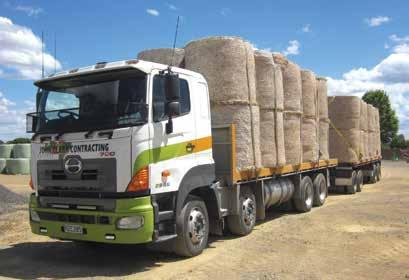
• Full service available -
- Disc, Power, Harrow, Plant
• Striptill Maize Spraying - 8 rows
• Striptill Maize Planting
• Row Crop Side Dressing / Spraying of Maize post planting
• Spray options
- 15 metre boom on Spray Truck
- 24 metre boom on Tractor Sprayer
• Maize Silage contracts available
• Solid Muck Spreader for effluent / Drain Cleanings / Chicken Manure
• Bobcat for calf sheds
• Digger
• Metal Cartage
• Level Blade for tracks
ROUND OR SQUARE HAY AND SILAGE FOR SALE

Paul Charman
King Country River Care has been running on-farm seminars with an aim of showing farmers what the new era of carbon neutral goal setting could look like.
River Care coordinator Lana McCormick says the idea was to demonstrate how farms in the area are looking to understand the impacts of moving their operation towards a carbon neutral position, and how it could be achieved.
The first two meetings were held on the dairy farm run by Phil Watkins and Jo Stockley at Piopio (June 26) and on Brent and Louise Scott’s sheep and beef property at Ōpārau (July 9).
Another was hosted by Stephan and Stacey Turner, Brien and Noelle Turner, at 942 Tikitiki Rd Te Kūiti, on Monday.
The Government had signalled it would introduce legislation to ensure agriculture did not enter the New Zealand Emissions Trading Scheme but it was still unclear exactly where this leaves things.
“We still have the Climate Change Response (Zero Carbon) Amendment Act 2019; large concern over rising temperatures and our key agricultural customers and capital providers requiring change as part of doing business.”
The Zero Carbon Act had the aim of reducing net emissions of all greenhouse gases (except biogenic methane) to zero by
2050 and to reduce biogenic methane to 34-47 per cent below 2017 levels by 2050, including to 10 per cent below 2017 levels by 2030.
The setting of two separate targets had become known as the “split-gas” approach.
“As individuals we have not been asked to meet these targets, but we’re part of the New Zealand and ‘ag-sector’ communities, which have been charged with doing so,” McCormick said.
For New Zealand, the long-lived gases of interest were carbon dioxide – generated by fossil fuels, cropping and lime, and nitrous oxide – generated by dung and urine from animals and from use of nitrogenous fertilizers.
The level of methane emissions was dependent on the number of animals on the farm; how much feed (pasture and bought in supplements) they were eating and the rate at which animals converted feed to methane.
Scientists and entrepreneurs were working on a vaccine designed to lower the methane conversion rates.
When it came to sequestration various trees did this at different rates. Exotic hardwoods led, followed by pine, Doulasfir and exotic softwood. The meetings discussed the various advantages and disadvantages of these trees.
Conclusions included:
That it was possible to make changes

resulting in a net-carbon zero emissions position.
That some farmers could be in this position now, depending on the age and type of vegetation they had on hand, and what was deemed an allowable rate of sequestration for each block.
The right tree in the right place was still the best approach.
Unless farmers dramatically changed
feed use levels, achieving the agricultural sector reduction targets on an individual farm would most likely have to make use of “lower methane genetics”, plus the new vaccine/inhibitor technology.
It was possible to begin some methane emissions reduction measure immediately. But the possibility of a cost being applied to methane emissions had not gone away.
The advent of pasture farms being converted to pine plantations to collect carbon credits has impacted the rates income of rural councils.
That’s the view of a spokesperson for 50 Shades of Green, James Cates, who says “tree farms” are helping to hike rates overall.
As Cates sees it the full farm conversions generally lead to the carbon farming company involved either moving the “improvements” (houses and other buildings) off the property or subdividing off, and selling, the portion of land they stand upon.
“Once the improvements are gone – the property owner receives a rates reduction. But had this land remained in traditional pasture farming the rates take would have been consistent, going
into the future.
“So obviously the council concerned has to recoup its losses, and that leads to higher rates for everyone else.”
“...we did point it out to them when there was a big rush to get into carbon farming, but it fell of deaf areas at the time. Te be honest. I’m over the whole thing now because nobody listens. I and my colleagues in 50 Shades are losing our mojo a bit.”
The negative effects of carbon farming – most of which involves pines as the most lucrative species -– would be long term, he added.
“What are they going to do after 30 years when they’ve been paid out all their carbon credits? Those companies will be wound-up and their owners will just walk away, and then who is going to pay the rates on those properties?
Cates did not believe that pine forests
would eventually regenerate themselves into native forests.
“Pines are the most rapidly-growing and dominant species out there. If they automatically give way to natives why are we bothering to spray wilding pines in native bush blocks?
With the advent of large scale carbon farming, Cates expected more forest fires.
“You look at all these countries that are having wild fires overseas. We’ve had nothing like this so far, but there certainly have been more fires in pine plantations in recent years. It’s just lucky a couple of wet years have helped to hold it back.”

James Cates questions to logic of converting pasture into forests.

• All types of spraying and fertiliser application
• Experienced, local pilots
• Tracmap GPS, Flow Control and Anti-Drift Technology

• 40 years+ of combined experience
• Number 1 service to all our clients
• Proof of placement provided

Managed by Kim Turner, Farm
4 is Wairarapa Moana Ki Pouākani Incorporation’s Ahuwhenua trophy winner at Mangakino. The farm milks 980 cows and produces 416,000kg milk solids.
To the uninformed, Farm 4s big trophy win might seem a real ask.
The “cold, foggy” dairy unit is operated by a bunch of girls (plus one guy) … it also has low soil temperatures and nitrogen inputs much lower than the parent group’s other 11 farms.
But most of these things are the farm’s biggest assets.
Because of the low nitrogen input, the high breeding worth farm operates with less environmental impact, while remaining productive… award winningly so.
“You’d think we’d get less grass, but it doesn’t affect our growth. There’s lots of clover and it works hard.”
The almost-all-female team are an “awesome” bunch who would be a “bonus on any farm, and really make it stand out.” Modern equipment makes up for any strength differences.
“Females do the job as well, if not better than dudes.”
She would love to see more in the industry.
While having a family can challenge women farm workers, this wasn’t unsurmountable in her opinion, having herself started farming with a young child.
Turner’s team is second in command
Haley Webber, herd manager Chersonia Stowers, farm assistant Corpow Potter, plus Cecilia Montelego (who is from Uruguay) and Brooklyn Webber.
Their care for equipment and livestock, and reliability is reflected in the most noticeable feature in Turner’s farm office:
a wall of Wairarapa Moana trophies for everything from pasture management to farm financials.
Visitors always mention the farm’s tidiness and good maintenance. Contractors tend to ask to use their toilet, because it’s always the cleanest.
Staff stay until everyone’s accounted for; they have weekly “toolbox” meetings for health and safety, covering new risks or recent incidents.
They’re connected to the wider WMI team, enjoying an end-of-calving bonfire and annual in-house awards. Training is thorough whether it’s on hazardous substances, mating, or driving trailers and motorbikes.
She said WMI provide up-to-date technology: the automated cup removing, drafting gate and teat spraying systems that mean one less labour unit is needed.
Then there’s Turner’s contribution.
“The secret to good farming is attention to detail all the time, and, giving clear instructions. A lot of it is observing: I’m always looking and planning.”
“I love getting stuff done and seeing the results. It’s so nice seeing nice clean paddocks and happy cows munching on their grass. Every part of it is rewarding.”
Turner grew up on her family-owned farm in Opārure – running Angus cattle and sheep. She went to school there before attending Piopio college.
Later, she moved into Te Kūiti, and “did not like living in town.”
After school, she realised her future lay on the land.
Her then-partner already worked on a dairy farm – and she joined him, starting out as a calf rearer and relief milker, filling in quiet time by “asking for more and more work.”
That job was at Arohena; they later

moved to a Mangakino farm. When its owners sold, she looked for jobs and successfully applied to Wairarapa Moana. Its properties were then run by sharemilkers: they became her employers for the next 14 years.
Later, WMI phased them out and moved to employing managers.
Asked to stay on, she started at Farm 12, where after three months she was promoted to second in command where she worked for a year before applying for the
manager’s job on Farm 4.
There wasn’t just on the job training –she also did industry training.
Fast forward seven seasons to today. What’s next for Turner? Her newest role, as manager of WMI Farm 2, while she remains in charge of Farm 4, and overseer of Farm 3.
There are no plan to join the corporate side of the operation.
“I love being out on the farm, I’m a hands-on person.”
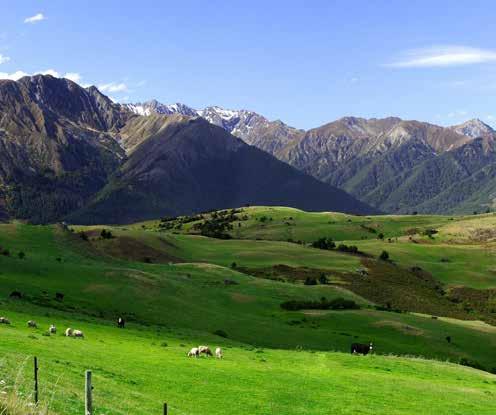


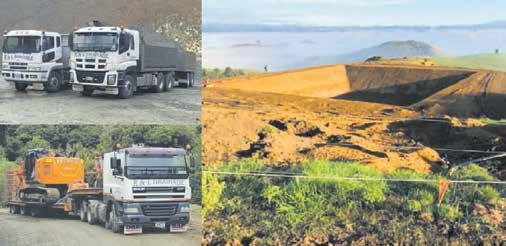


Mary Anne Gill
Farmers have virtually no control over the most important things that happen around their farms, but they can ensure they don’t take over their lives.
That was the take home message from John Kirwan, who readily admitted to farmers at Fieldays last month that he knows nothing about farming, but experience has taught him how to look after his mental health.
“Most farmers are quite introverted; you sleep and work with your business partner. When you get put under pressure, you work harder because that’s what you think you should do, so you don’t take any time off.
“You are normally isolated, and you have no control over the most important things around your farm. Things like milk, wool, sheep and beef prices.
“All of these things are out of your control. That is challenging for your mental health so you should take control,” said Kirwan, who was knighted in 2012 for services to mental health and rugby.
He was at Fieldays with Westpac, the bank he has been an ambassador for since 2013 sharing his experience of suicide ruminations, depression and tools to cope.
Anxiety, depression and burnout took away self-confidence, enjoyment in life and self-esteem, he said.
“A minute feels like an hour, an hour feels like a day and a day feels like a week,” he said. “So, by the end of every day, you’ve got no confidence, no selfesteem, no enjoyment in life and you’re incredibly tired.
“I went to a farmer’s place once. This farmer was in a bad way.
“I looked out his window and I said to him ‘wow I would pay $250 a night for

this’. All he could see was debt, all he could see was weather, all he could see was what needed to be done on the farm.”
He said it was important to “connect with your community” – but acknowledged it would be hard because farmers were often isolated.
Kirwan openly speaks about his battle with depression and when it came to a head. He was in Argentina in 1985, on an All Blacks’ tour, where he scored six tries, including four in two test matches.
“There was a window open, and I was on the 10th floor of the Hilton in Buenos Aires. I was sick of fighting the suicidal ruminations. I was plucking up the courage to jump out of the window.”
It was only the intervention from his roommate Michael Jones which stopped him.
“He saved my life. I played a test match the next day and scored two tries. It was irrelevant.”
Kirwan told All Blacks’ doctor John Mayhew who told him what the winger had was an illness, not a weakness, and he

needed to see an expert.
So, Kirwan consulted a psychologist –who asked what he would do if he had a hamstring injury and he said he would ice it.
“Your brain is no different, you’ve got a hamstring in the head,” she said.
“I used to use alcohol as the ice…”
After several consultations, Kirwan accepted he had a problem. He was prescribed an anti-depressant and the psychologist started to take him through the six pillars of wellbeing.
Emotional, physical, financial, social, intellectual and spiritual.
“I’ve gone from surviving to thriving. I look after my mental health every day. It’s made me a better dad, better husband, better workmate, better me.”
Farmers could look at what they can control not what they cannot control.
“I spoke to a whole lot of farmers and asked them, ‘who controls the milk prices? Who controls the weather? God whatever, not us.’
Farmers cannot control the weather,
but they could prepare and have a plan, a worry map. Like everyone, farmers could try chilling, celebrating, enjoying, connecting, moving and doing, he said.
Kirwan is learning how to play the guitar. He admits he is bad at it but it helps him. He cooks, reads, walks the dog, surfs and moves.
“Do one thing in our day… once you’ve done ‘dot’, then do ‘dat’ (do another thing). Be aware of when you are under pressure.”
Knowing the signs was important.
“Your first stop is to find some time, some time to reflect.
“Who’s so busy you can’t connect with your partner? Stress and pressure can make you feel alone, but connecting with people can make you feel alive.”
•Feeling tired all the time, having no energy
Sleeping too much, or not enough
•Feeling worthless and hopeless, low self-esteem
•Loss of appetite or overeating
•Sadness or emotional numbness.
Tips
• Stay connected
• Be active in a different way
• Try to manage your stress
• Eat well
• Protect your sleep
• Identify what brings you happiness
• Give yourself time to relax
• Stay on top of daily chores
• Try not to procrastinate
• Avoid negative thinking
• Know when to get help.










Chris Gardner
New Zealand’s only facility dedicated to mastitis testing at Waikato Innovation Park is helping dairy farmers reduce cases and costs.
Microbiologists at Farm Medix’s Hamilton laboratory analyse milk samples from farms across the country.
Through advanced pathogen identification techniques, they partner with GEA Farm Technologies New Zealand subsidiary FIL to create strategies to lower somatic cell counts and reduce clinical bovine mastitis in herds.
Paeroa dairy farmer Stephen Begbie credits FIL for the significant reduction in mastitis cases on his farm over three years.
“I had been grappling with a significant mastitis problem, the somatic cell count was spiking up and down, reaching as high as 380,000.”
Begbie tested his whole herd. Out of 320 cows, 30 were identified as having Staphylococcus aureus.
By segregating these cows, milking
them last and supplying milk without the Staphylococcus aureus cows in the vat, he reduced the somatic cell count from 380,000 to 85,000 in one day.
Last year, Begbie only had six cases of mastitis and by taking a selective approach to drying off, he only had to dry cow 10 per cent of his herd.
Begbie is a strong advocate of lab testing, allowing for ongoing monitoring and targeted interventions.
He saved between $2000 and $3000 on dry cowing last year because his cell count was so low.
Mastitis control accounts for about 85 per cent of antibiotics used on New Zealand dairy farms.
“Dairy companies are realising that preventing mastitis, not just treating it, results in more milk in the vat,” said FIL national sales manager Colin May.
“Through evidence-based interventions, we are improving milk quality, increasing herd productivity and supporting sustainable agricultural practices, both within New Zealand and globally.”

A Waipā native tree nursery is donating thousands of trees to rural schools across the North Island.
Adam Thompson, the owner of Restore Native, says it’s an important social and environmental initiative specifically targeted at rural schools.
Among those on the list are Āria, Benneydale, Kāwhia, Kio Kio and Piopio schools.
Restore Native plants over a million native plants annually, mainly for use in farm plantings to restore land, improve biodiversity, and protect waterways.
A total of 54 greater Waikato schools expressed an interest in getting involved in the programme and about 5000 trees are being distributed across the region.
Schools decide where and how their donated trees are planted.
Some are placed on school grounds, others are planted by students on neighbouring farms to repair and restore gullies, steep hillsides and stream banks, or protect wetlands and waterways.
Thompson owns a 180ha beef farm on the outskirts of Cambridge.
Restore Native is no stranger to supporting the community.
In response to the effects of Cyclone
Gabrielle last year, it introduced a Trees for Tairāwhiti programme where the price of native trees was reduced to $2 to encourage widespread tree donations for the region.
For every tree purchased by the community, Restore Native matched it.
In the end, over 10,000 trees were given to the affected farmers and landowners in the region.
In New Zealand, if a relationship has lasted at least three years, the Property (Relationships) Act 1976 applies (“the Act”). The division of relationship property is generally 50/50, regardless of what has occurred. Here we explain more about relationship property and how it’s divided.
When does the Property Relationships Act apply?
If you are married, in a civil union partnership or in a de facto relationship (including same-sex couples) and have been in the relationship for three years or more, when your relationship ends by separation or because one of you dies, you will be a ected by the Property (Relationships) Act.
What is ‘relationship property?’
Relationship property includes things like your family home and property, family businesses and investments, property owned jointly or in equal shares by the partners, property acquired during the relationship. It also includes superannuation and insurance policies, cash and increases in the value of any relationship property, any income earned from assets or the sale proceeds from selling assets.
How is relationship property divided?
Under New Zealand law, the general rule is
that relationship property is divided equally (50/50) between you, regardless of the reasons why you are separating. For parties to have a binding relationship property and separation agreement that is enforceable in court, solicitors for each party are required to certify the agreement to say they have provided independent legal advice to their client on the terms of the agreement, and that their client understands those terms.
Do we have to divide things equally or can we do what we want?
You have the option to divide your relationship property how you wish, provided that full disclosure of relationship property assets and debt have been provided and you have received independent legal advice from your solicitor. This is especially important when there is a family home that either needs to be sold, or one person is retaining it on settlement. When you are both in agreement as to how the division of relationship property will happen, a
separation agreement is dra ed setting out the agreed terms and signed by both parties and their solicitors. It is at this point settlement of your relationship property is completed.
Is debt included in relationship property?
A starting position is that any debts incurred during the relationship are relationship property debts, regardless who’s name the debt is in and whether you knew about it. The responsibility for relationship property debts is shared but personal debts remain the responsibility of the person who incurred them. Relationship property debts


are things like debts incurred jointly (such as bank loan to purchase a house), credit card debt, personal loans, hire purchases etc.
Engage a relationship property lawyer as soon as possible.
Understanding your legal position early in the process is vital. Assets will not necessarily be divided how you expect, and valuable time can be saved if you understand from the outset what the correct legal position is. This then enables negotiations to take place from an informed position and helps to bring matters to an end as cost e ectively as possible.
Doug Laing
The Wools of New Zealand Shearing Sports New Zealand shearing team has scored its second double on a six-match tour of the UK.
The latest successes came at the French championships on Saturday in the medieval southwest France town of Martel where shearers David Buick, of Pongaroa, and Jack Fagan,of Te Kūiti, beat the French team of brothers Gilles and Pierre Renton in a rare New Zealand test on the continent.
Fagan had also won the French final in 2016 and 2017, following father Sir David Fagan’s exit from 33 years in Open-class shearing with victory in the event in 2015.
The wins came just two days after a similar double at the Great Yorkshire Show, including a win over England, at the Great Yorkshire Show, and the Kiwis have now won two of the three tests on the annual northern tour that culminates with a three-test series against Wales, at the Cothi Shears next Saturday, the Royal Welsh Show on July 24, and the Corwen Shears on July 27.
Both the test and the Open final, each of 20 sheep each, were exciting spectacles as Fagan and Pierre Grancher, from Creuse in Central France, battled for the time honours, finishing almost blow for blow.
Grancher was first-off in the test, winning the race by four seconds from Fagan and shearing the 20 sheep in 14m 6s, but the King Country shearer had the best quality points and claimed individual honours by 6.6 of the Kiwis’ winning margin of 8.65pts.
It was much closer in the Open final,
in which Fagan again posted the better quality points but was also first-off, his 13m 24s pipping Grancher by just two seconds, but claiming the overall win by just 1.2pts.
Team manager Mark Barrowcliffe, of Piopio, said the events and Fagan’s experience on the “tricky little sheep paid dividends. The sheep were the French breed ‘caussenade du lot’.
A regular in France and a fluent speaker of french, Fagan has now won 22 Open finals, along with 63 speedshear victories.
Results:
International (20 sheep): New Zealand (Jack Fagan 14m 10s, 52.25pts; David Buick 14m 26s, 61.95pts) 114.2pts beat France (Pierre Grancher 14m 6s, 58.65pts; Gilles Grancher 15m 32s, 64.2ptspts) 122.85pts.
French all-nations Open final (20 sheep): Jack Fagan (Te Kūiti NZ) 13m 24s, 49pts, 1; Pierre Grancher (Creuse, Central France) 13m 26s, 50.2pts, 2; Jeremy Leygonie Martel, Southwest France) 14m 12s, 53.3pts, 3; Gilles Grancher (Alpes, Southeast France) 14m 41s, 53.35pts, 4.
Shearing earlier at the Great Yorkshire Show in England on July 11 in a match of 20 sheep each, the NZ shearing team also beat the England team of Adam Berry and Nick Greaves by just 0.55pts.
Fagan won the great Yorkshire Open final by 1.05pts from runner-up Richard Jones, of Wales, with Buick in third place.
A New Zealand team of Clay Harris from Piopio and James Wilson, chosen by New Zealand team manager Mark Barrowcliffe on the day, was beaten by England in a Development teams match.



















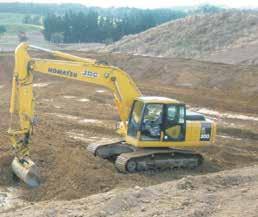

Most of you have started pregnancy scanning your sheep and are considering your options pre-lambing.
Having higher grass covers this season has resulted in ewes being in better condition which is reflected in higher scanning percentages and lower dry rates so far this season.
So what should you be considering to do in your ewes pre-lambing?
ducing a lot of eggs to contaminate the pasture.
Regional councillor’s view - By
Clyde Graf, Waikato-King Country councillor
tional boundaries.


By Hannah Catley Veterinarian BVSc King Country Vets
Individual body condition score ewes at scanning and get rid of anything that is still 2.5 or lower BCS – it will be very difficult to affect body condition of this group from now up to lambing at a minimum they would need to drafted out and be ad lib fed.
They are also high risk to be dead, missing or wet-dry.
Be critical of feed demand v feed supply. Cold weather has slowed pasture growth down and demand will far outweigh supply.
Consider pasture covers now and what this will reduce to by lambing/balance date.
Pasture under the ewes is the most critical tool to manage worm burdens for lambs and for weaning great lambs. Get some help with the numbers if you’re not confident in the analysis. If there is a high risk of poor pasture covers at lambing for the ewes, then long-acting anthelmintic products can be considered.
Collect some data – Faecal Egg Counts (FEC) at scanning or soon after can help identify if your ewes are pro-
Young sheep, in particular hoggets and to a lesser degree 2-tooths, need to be carefully managed if long-acting drenches are not used.
Think carefully here and talk to vets about options if you haven’t already. Monitor at dockingwhat is ewe condition like and what are the worm burdens with a FEC –this can guide when the first drench is needed for lambs as many are delaying drenching till after docking for lambs.
Scanning is a great time to be critical of the ewes, with drafting into lines for condition score – if they have been shorn recently, then you can do this by eye.
If they have some wool on them, then hands need to be put on the ewes.
Bearings will be a high risk this year with high feed levels, fat ewes and continued good feeding through tupping.
Feeding maintenance requirements (static body condition factoring in stage of pregnancy, and whether singles or multiples) can help if ewes are BCS 3.0 or higher.
Using Hideject injection at scanning and again pre-lambing has proven benefits and winter shearing can improve outcomes.
Salt supplementation (as minerals or fertiliser, e.g. magnesium salt licks or potassium fertiliser) is high risk and some areas of the farm among other risk factors, not always in our control
The discharge of contaminants to waterways is something that Waikato Regional Council (WRC) is charged with monitoring and preventing.
Recently, a prominent Waikato farming company was fined for discharging “a large volume of dairy effluent in a paddock”. The $94,500 prosecution was initiated by the regional council. Clearly, the potential contamination of waterways is taken very seriously by council.
Pureora farmers Peter Grant and Tina Goldsmith contacted me last week, concerned about an aerial 1080 poisoning operation happening this month, and surrounding their farm.
They say they have endured 10 aerial operations over 30 years, witnessing the horrific deaths of five of their dogs, other farm animals and wildlife, following previous regional council operations.
Peter and Tina say it is pretty demoralising and they’ve had to collect baits from their paddocks following over-sprays, leaving some paddocks too dangerous to stock.
Although they’re supplied bottled water following the aerial operations – because of contamination to their water supplies –they argue it’s insufficient. They say their neighbours are unhappy too.
Information provided by Peter and Tina reveals that it’s the council and the Department of Conservation poisoning 85,000 hectares of the Pureora Forest Park and surrounding area, with enough 1080 – based on the manufacturer’s warning label – to kill 2.5 million people, in this operation alone.
The Waikato farmers have good reason to be upset. Information supplied by DOC shows that when the aerial operations are undertaken, the deadly bait is spread not only across land, but also directly into almost all waterways within the opera-
The 1080 poison is manufactured in the United States and its warning label states “This product is very highly toxic to mammals and other wildlife. Birds and mammals feeding on the carcasses of contaminated livestock may be killed. Keep out of any body of water. Apply this product as only specified on the label.”
The warning is hardly surprising, given 1080 poison has no antidote and is listed in the World Health Organisation’s most toxic category. In New Zealand, the toxic baits and animal carcasses are left to decompose where they fall, on land and in water.
In most states of America, 1080 poison is banned. The US manufacturer, Charles Wiggly, says the United States uses just four tablespoons of pure 1080 poison per year (in sheep collars, used against coyote attacks). New Zealand, he says, purchases most of the five tonnes of pure poison he manufactures, annually. That’s more than enough poison to kill over 50 million people, each year. That’s potentially a lot of contaminated aquifers, and yet testing for 1080 or its metabolites in aquifers isn’t undertaken.
In 2015, WRC, DOC and TB Free jointly applied for a resource consent to spread 1080 poison across land and water for another 35 years, but in 2017, John Key’s Government exempted 1080 poison from needing a resource consent, so the joint application was dropped. That isn’t surprising, given our Government owns the factory that imports pure 1080, and manufactures the bait.
The regional council’s position on prosecuting farmers for contaminating waterways with effluent seems hypocritical, given that it spreads the deadly pesticide 1080 directly into those same waterways, and with impunity





Karaka Farm - Havelock
Roma
CC Connolly Family Trust - Mangakino



It’s been said ‘where there’s a wool there’s a way’ and that certainly applies to Robert and Gail Gray.
The couple and their sons Brandon and Zaine have taught themselves to use an array of second-hand wool processing equipment and now make a range of niche products.
“We’re building up to our dream of running an on-farm natural products store,” say Robert, the Federated Farmers president for Ruapehu, and Gail, the dairy chair and secretary/treasurer.
They run mostly dairy on their property near National Park but also have sheep and beef on that farm and another nearby property.
Robert has been farming all his life and, when younger, worked for a time in Canada on a farm that processed its own wool.
That experience was in his mind eight years ago when the dairy payout was little more than $3 and the family was considering other income streams.
With Brandon and Zaine earning good money, they co-invested in a second-hand carding machine from a woollen mill that was closing down.
Robert, who enjoys perusing TradeMe, soon invested in a spinning frame and a gill, which removes the natural hooks in wool and aligns the fibres ready for spinning.
When they heard that another woollen mill in Milton was closing, they headed south to dismantle and load onto a truck two more spinning frames and various winding, twisting and dyeing equipment.
Then they had to build a new shed to accommodate the growing machinery menagerie. Through trial and error, the Grays have taught themselves to use the
gear.
“It has to be that way; it’s a very closed shop,” Gail says.
“There are no manuals to go with the machinery. It’s just try it out and see how you go.
“Robert and Zaine do most of the mechanical stuff because they’re into that sort of thing.”
Farming so close to the Tongariro Crossing and other tracks, they make and sell walkers’ wool to insert into boots to guard against blisters. It’s only 20 grams to a packet but it fetches a good price and sells well.
Another product is wild bird nesting wool that people can leave in their gardens for birds to grab and use for their nest building.
They also make and sell woollen dryer balls – six to a pack. The balls help keep clothes in a dryer apart, allowing the warm air to circulate better, cutting drying time and reducing static.
“The idea is to put three in at a time, and leave the other three to dry on the windowsill,” Gail says.
Robert says their latest project is to convert a mattress-topping machine, purchased in Kaio, to produce duvet inners, pet beds and continental blankets, using strong wool.
It means they now use all of the wool from their farm in their own products.
Living so near to the masterpiece of railway engineering, the Raurimu Spiral, they’re now branding their products under a ‘Spiral Farms’ label.
Their daughter Jessica, who lives in Taupō, helps on the marketing side.
“Ultimately, we want to set up an onfarm shop to service passing travellers and tourists and others interested in

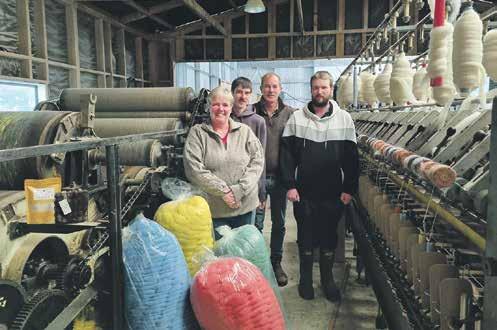
natural products,” Gail says.
“We have our own meat brand, we do free-range eggs, we have the wool products, and we’re keen to sell our own raw milk.”
Ever the entrepreneurs, the Grays are also making fire starters from pine and beeswax.
“The feedback we’ve had from barbecue enthusiasts and people with woodburners is that they’re very effective,” Robert says.
Like many other farmers, the family is frustrated with wool returns.
“We have a value chain where everyone else clips the ticket but we’re the price taker, when we have most of the costs
and deal with all the things that can go wrong,” Robert says.
When they bought that first carding machine from Carrington’s, a manager there told them once they’d washed the wool bought from the farmer, it doubled in value.
“Once they’d carded it, it doubled in value again. Once it had been gilled and combed, the value doubled again, and so on,” Gail says.
“We want that value, and I guess by creating these products and having conversations with people buying them, we’re also sharing with others a bit of the amazing rural lifestyle we take for granted.”


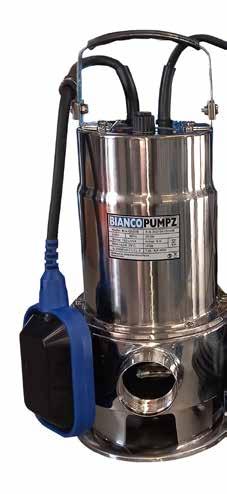







Paul Charman
Downed matai or totara logs can remain useful for decades, so farmers should take a good look at what previous generations have thrown down the bank at the back of the farm.
So says retired Ōtorohanga farmer Jim Rogers, who for many years operated a mobile sawmill processing salvage timber on properties around the district. Jim, who is no longer involved in milling salvage logs, acknowledges “much of the good stuff” has already been claimed in his part of the world.
But further afield he’s not so sure.
“The King Country is a big place and much of it was covered in native forest. I think people should maybe take a closer look at some of those old logs on the back of their properties. Some folks have found real treasure that way.”
Jim was never a bigtime dealer in salvage timbers. But for more than 20 years, until he got rid of it a few years ago, his
mobile sawmill supplied an absorbing weekend hobby.
“I’ve seen a lot of farms where the owner has discovered logs of matai, totara and rata. There’s always a market for good native timbers from furniture makers and various other artisans in the big cities.”
Jim has a warning, however.
“It’s essential to be diligent with the paperwork, because the Ministry of Primary Industries (MPI) keeps close tabs on what is salvaged.
“The regulators take a real interest in the salvage of native timbers these days. For example, if an old native log is over the fence on DOC land, you can’t touch it.”
Though no longer actively involved, Jim has set aside an impressive store of various native timbers, some of which he supplies to Ōtorohanga Kiwi House for various building projects.
“I just love the beauty of these timbers, which are now in such short supply.”
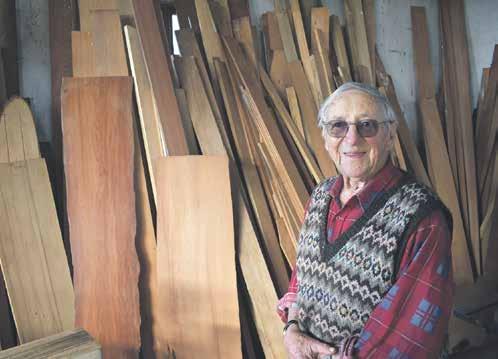
A bill that would prevent regional and district councils from regulating greenhouse gas emissions is a smart step for climate change policy, Federated Farmers say.
“Greenhouse gas emissions are a global rather than local challenge. It has never made sense for local councils to individually regulate greenhouse gas emissions,” the organisation’s RMA reform spokes-
person Mark Hooper says.
Hooper says the amendment Bill presented by MP Mark Cameron will largely reinstate changes made in 2004 that were then repealed in 2020.
He said because the country had a number of national policies regulating greenhouse gas emissions, any local policy duplicated what central government was already doing.”

“Having regional councils regulate greenhouse gas emissions has the potential to create huge headaches for farmers,” Hooper says.
He said the Greater Wellington Regional Council’s proposed a target of a 50 per cent reduction in all greenhouse gas emissions by 2030, including biogenic methane, diverged from the central government targets.

“For Wairarapa farmers, who sit inside the GWRC’s boundaries, this means a resource consent application could set conditions that require farmers to reduce emissions in line with the 50 per cent target. It raises questions for all resource consent applications. For example, could a new road or house fail a resource consent application if it wasn’t viewed as consistent with a 50 per cent reduction?”
















“A sharemilking job would be awesome.”
That’s one of the hopes George Dodson has after being crowned the 56th FMG Young Farmer of the Year in Hamilton last weekend.
He succeeded the competition’s first female winner – Pirongia’s Emma Poole. He said he hoped the win would support him in the future – especially in his Canterbury community and the next step in his career.
After his win he spoke of his hope of getting a sharemilking position and getting more support for the Canterbury Young Dairy Farmers Leaders Network which he had started.
Dodson, 23, pipped the Northern representative Caleb Eady by three points. Aorangi Young Farmer Gareth McKerchar finished up in third place.
Dodson’s win capped three days of challenges against six other finalists including Waikato’s representative Dennis Main from Piarere.
Challenges included an exam, an interview, heavy machinery, livestock, quizzes, and public speaking.
More than 500 spectators poured into the Claudelands Oval to watch the action unfold during Friday’s practical day.
Points added up with every challenge, and the race continued to play out until the final buzzer quiz on Saturday evening. It was Dodson’s performance in the

final buzzer quiz that secured him the win.
“My dad put hours and hours and hours into helping me prepare. I also had some of the boys coming out once a week from an hour’s drive away to test me on the buzzer, and I think that showed,” he said.
As well as the title, Dodson also claimed the Agri-Knowledge award and over $90,000 in prizes.
New Zealand Young Farmers chief executive Lynda Coppersmith said Dodson impressed with his broad knowledge and impressive leadership skills.
“FMG Young Farmer of the Year is one of the most prestigious farming awards in the country.
“It’s inspiring to see it go to someone who will not only be a strong ambassador for the next generation of young farmers, but the agricultural industry as a whole,” she said.
“After seeing the talent from this weekend, it’s exciting to see what the future of the food and fibre sector will hold.”
A duo from Otago Boys’ High School in Dunedin picked up the junior young farmer of the year title.
Shamus Young, 18, and Hayden Drummond, 17, competed against 13 other teams from schools across the country.
Mt Hutt College students James Clark and Jack Foster were runners-up, while Kaela Brans and Liana Redpath from
George Dodson was all smiles after winning the 56th Young Farmer of the Year competition last weekend in Hamilton.

Napier Girls’ High School came third.
The next generation of young farmers, the AgriKidsNZ competitors, also tackled a range of challenges during the event, including modules, quizzes, and an AgriKids race off as part of the grand final weekend.























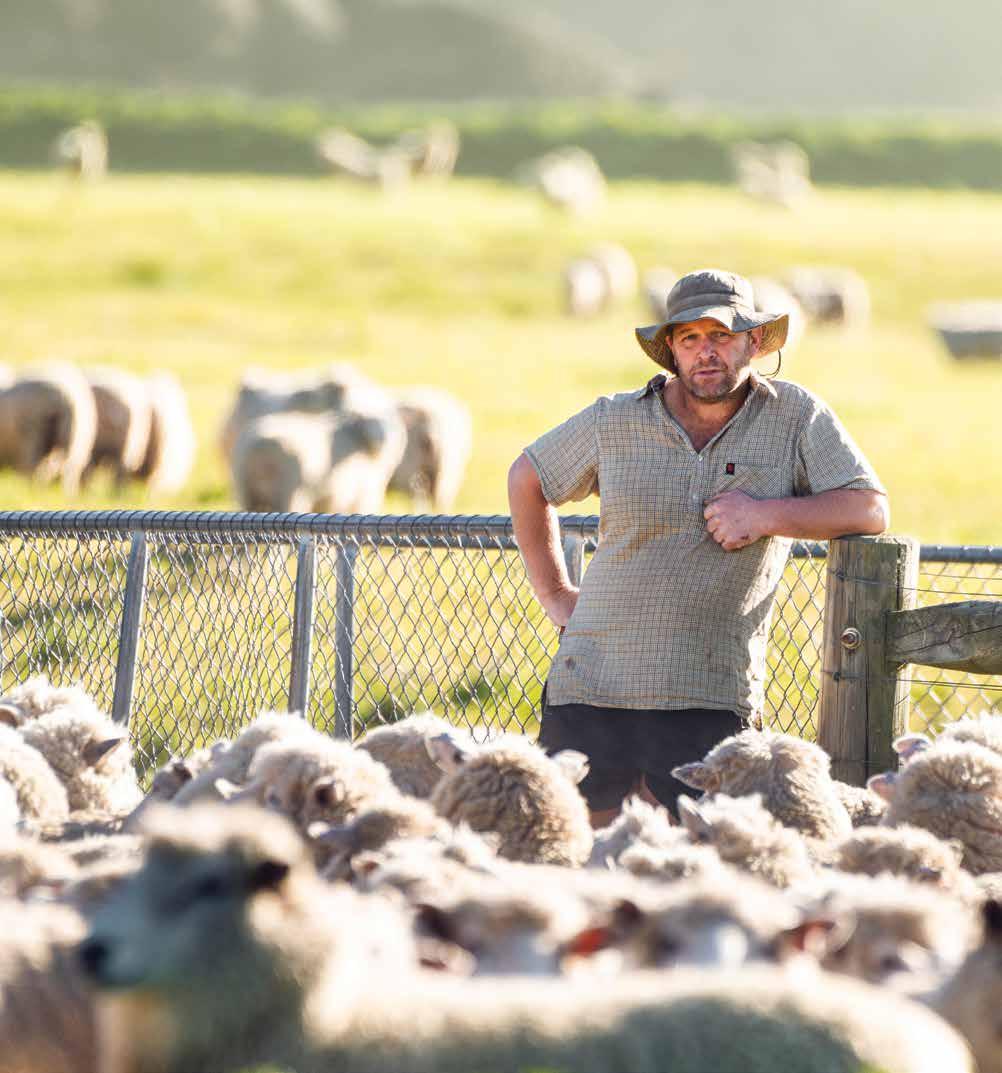




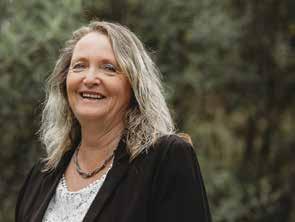

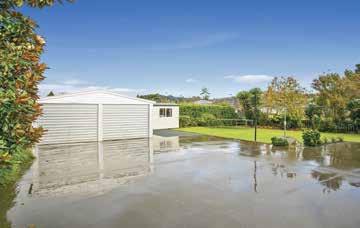
Don’t miss an opportunity to secure this renovated 1960s three bedroom, one bathroom home streaming with sunlight in the entertaining areas at the front of the home.
This well presented and maintained home has open plan modern kitchen, dining and living areas with a deck off the kitchen/dining room.
There are single wardrobes in all three bedrooms. Modern bathroom with shower, vanity and toilet. Separate laundry.
Situated on a generous 910sqm (approx), low maintenance section with the back portion securely fenced with gates across the driveway, making it child proof and dog friendly.
There is a double garage plus garden shed.
Conveniently located close to town, schools and the hospital.
With the neutral decor throughout and warmed by a heat pump, this home will appeal to many so don’t delay.







































































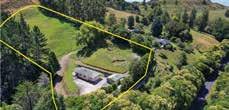














Merrin Avenue, Otorohanga, 2104sqm, no covenants on
16 Merrin Avenue, Otorohanga, 1459sqm, no covenants on
163 Old Te Kuiti Road, Lots 1, 3 & 4, 5517-8932sqm, easy covenants. Phone Lorraine
Lot 1, 627 Waitomo Valley Road, Otorohanga, 8105sqm rural lifestyle section. Phone
Lots 90-108 Harpers Avenue, 486sqm to 962sqm, Westridge II subdivision. Phone John From $220,000ea
Te Kūiti sections (sizes are approximate)
54A Ailsa Street (Lot 1), Te Kuiti, 2159sqm, end of a cul de sac, STT. Phone Buzz
54A Ailsa Street (Lot 2), Te Kuiti, 1707sqm, end of a
10 Robin Azariah Place, Te Kuiti, 600sqm level section. Phone Buzz
Other sections (sizes are approximate)
0 Raglan Road, Kawhia, 2648sqm lifestyle section, no covenants, completely off grid. Ph Julie $340,000 neg 147 Maukutea Drive, Kawhia, 600sqm, covenants apply, services at drive,























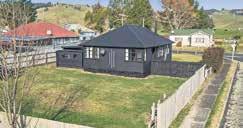



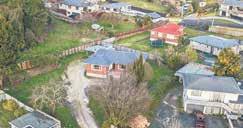







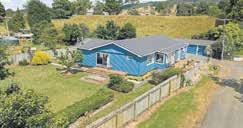




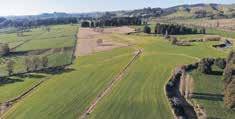
















































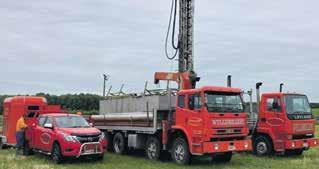
























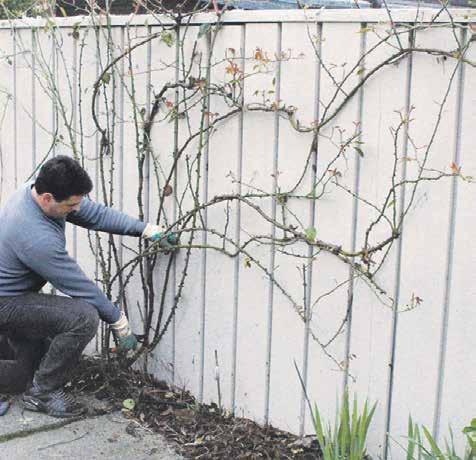
Last week I talked about pruning bush roses, so this week I thought it would be good to do climbing roses, as they are pruned differently.
With climbing roses you want to train your climbing rose in a fan shape, with a 3-4 long canes on each side which can be tied back to the support that you are growing it against.
So, with any pruning start with the three D’s dead, diseased & damaged. T hen remove any canes that are crossing over each other and any older canes that didn’t flower that well.
Step back and have a look what is left to help you choose your 3-4 canes for each side, what your rose is climbing against, how vigourous your climber grows.
I tend to leave 2-4 canes to the right and left to create my fan. Once you have decided which ones are stayingn remove the rest.
Keep checking you are happy by stepping back and taking a look as you start removing unwanted canes.
I like to work from the bottom
Specialising in re-roofing, roof maintenance, spouting, downpipes and light commercial work and roof leaks Ph 027 493 2502
Location: Otorohanga & Te Awamutu
Join Pratts as an Administration Support member. You’ll work with our Otorohanga and Te Awamutu branches on a rotational basis, reporting to the Group Administrator and Group Manager. Key responsibilities include:


• Showroom consultations, managing inquiries, job processing, and financial duties.
• Maintain stock levels, assist customers, and ensure accurate billing and record-keeping.
• Strong communication and organisational skills are essential.
If you're proactive and detailoriented, apply now to contribute to our dynamic team.
CV & Cover Letter to hr@pratts.co.nz
Job Description: https://www.pratts.co.nz/careers/ Applications Close 12th August
Trades & Services


up tying the canes into the position and then pruning any lateral shoots (like in the picture below to the red mark).
Prune back to 2-3 buds from the main cane. Do this all along the cane, then move onto the next cane until you have finished.
Every two years I gently wire brush my roses to promote new basal shoots to emerge.
At the bottom of your rose where it has been grafted over time it forms a crust of flaky bark, moss or even lichen.
Gently removing this with a wire brush helps to stimulate new growth.
Don’t forget to spray your pruned rose with copper and super shield and give it a good feed for the new season ahead.
If you haven’t pruned your grapes yet do them also and follow the same guidelines to a climbing rose.
Prune to get your frame then take the growth growing off these canes back to 2-3 nodes from the main cane.





We buy your old worn out or broken gold jewellery.
Bring in any earrings, chains, bangles, rings, watches or coins
Turn it into $$ CASH Conditions apply. Must have
passport or drivers licence. Items must be your own property

70 Maniapoto St, ŌTOROHANGA 07 873 7008
159 Rora St,
For Sale
FIREWOOD - Ph Sonny 021 617 349 or 07 873 9190.
HUNTAWAY PUPS:
Top working parents. Black and tan. 10 weeks old. Ready to go. Phone 027 478 1783.
Situations Vacant
We are looking for a calf rearer to join our team on our dairy farm 5km north of Te Kūiti. Immediate start. Ring 021 745 710

We are looking for a Qualified Builder to join our team. If you’re looking for an energetic and fun team environment that knows how to get the job done this could be the role for you.
Successful applicants must:
- Have a full drivers license
- A full set of hand tools and basic power tools
- Be confident in working independently and supervising others
- Strong health and safety practices
Role will include:
• A company van
• Uniform provided
• Pay based on experience
This role is fulltime Monday to Friday with the occassional Saturday. Our work is based out of Ōtorohanga and includes surrounding areas.
Silage and hay bales for sale 23/24 seasons bales, hay is 12 1/2 bale equivalent. For more info please ring 021 189 4871


Conservation volunteer Judy Donovan went missing in the Pureora Forest on March 23 and is presumed dead
A public meeting to discuss issues arising from this tragedy will be held at the Tomo Bar & Eatery, Waitomo on Wednesday, July 24 at 7pm
Interested parties including hunters, land search and rescue and police have all been invited.
ARIA COSMOPOLITAN CLUB INCORPORATED , 1 Kiekie St, RD1, Aria has made application to the District Licensing Committee at Te Kūiti for the renewal of a club licence in respect of premises situated at 1 Kiekie St, RD1, Aria and known as Aia Cosmopolitan Club. The general nature of the business to be conducted under the licence is that of a chartered club. The days on which and the hours during which alcohol is to be sold under the licence are Monday to Sunday 10am to 1am the following day. The application may be inspected during the ordinary office hours at the office of the District Licensing Committee at Waitomo District Council, Queen Street, Te Kūiti. Any person who is entitled to and wishes to object to the issue of the licences may, not later than 25 working days after the date of the publication of this notice, file a notice in writing of the objection with the Secretary of the District Licensing Committee at Waitomo District Council, P. O. Box 404, Te Kūiti 3941. No objection to the renewal of a licence may be made in relation to a matter other than a matter specified in Section 131 of the Sale and Supply of Alcohol Act 2012. This is first publication of this notice.

Anything too big for a shovel - give

Pat Prescott Ltd has a proud history in Ōtorohanga, spanning over 60 years. The family-owned business holds the Toyota franchise for the area and operates a successful car yard as well as a service and parts department alongside the Caltex Service Station. They are on the hunt for their next vehicle sales superstar / cadet to join the team.
As well as selling our exciting and market leading new vehicles, used vehicles and accessories, you will need to be a customer focused legend, building relationships with your team and customers, prospecting for new customers, answering internet enquiries and be actively involved in the day to day running of our sales department and dealership. You won’t get bored, make no mistake - it’s a busy, but also a very rewarding position for someone with the drive and desire to succeed.
Whether you have extensive sales experience in the automotive industry, are a seasoned salesperson looking for a change or just starting out on your sales journey and think you have got what it takes to succeed in this role, we would love to hear from you!
If this sounds like a role you are interested in, would like more information or wish to apply (cover letter and CV required) contact Sarah at sarah@eight73consulting.co.nz or phone 873 7104.
Applications close: Friday 26 July 2024, 5pm
Property maintenance and construction
Lawns, trees, stump grinding, sections, moss & mould treatments, Chemwash, waterblasting, gutter vac, water tank and trough cleaning fences, retaining, odd jobs and more. References available GST registered.
Mike & Allana 027 350 0836 info@handy-man.co.nz
ARIA COSMOPOLITAN CLUB INCORPORATED , 1 Kiekie St, RD1, Aria has made application to the District Licensing Committee at Te Kūiti for the renewal of an off licence in respect of premises situated at 1 Kiekie St, RD1, Aria and known as Aia Cosmopolitan Club. The general nature of the business to be conducted under the licence is that of a chartered club. The days on which and the hours during which alcohol is to be sold under the licence are Monday to Saturday 10am to 10pm. No alcohol is to be sold on the premises on Good Friday, Easter Monday, Christmas Day or before 1pm on Anzac Day. The application may be inspected during the ordinary office hours at the office of the District Licensing Committee at Waitomo District Council, Queen Street, Te Kūiti. Any person who is entitled to and wishes to object to the issue of the licences may, not later than 25 working days after the date of the publication of this notice, file a notice in writing of the objection with the Secretary of the District Licensing Committee at Waitomo District Council, P. O. Box 404, Te Kūiti 3941. No objection to the renewal of a licence may be made in relation to a matter other than a matter specified in Section 131 of the Sale and Supply of Alcohol Act 2012. This is first publication of this notice.

Email CV to coullbuilders@xtra.co.nz or call Dylan on 027 722 7914 REQUEST FOR









Ōtorohanga District Council invites tenders to carry out Water Meter Reading in Ōtorohanga and Kāwhia water supply schemes. This request for tender can be found on www.gets.govt.nz.
‘GETS’ RFx ID: 29742964
Tender Open Date: 18/07/2024 at 2pm
Deadline for tender enquiries: 6/08/2024 at 2pm
Tender Closing Date: 8/08/2024 at 2pm
All enquiries can be made to Emma Good by emailing emma@otodc.govt.nz with the reference ‘C1150 Ōtorohanga and Kāwhia Water Meter Reading’. Tender award to be published on GETS only.
























































the link below
https://kingcountrynews.partica. co.nz/king-country-news/

King Country Grey Power Inc

Monday, July 29, 2024 @ 2pm
St Lukes Church, 85 Esplanade, Te Kūiti
Speakers: Collette from Te Kūiti/Ōtorohanga Police Mandi from Commsafe/Neighbourhood Support Members and residents aged 50yrs and over welcome Quick fire raffles, Sales table Meeting followed by shared afternoon tea
OF MEETING OF DESCENDANTS OF HANGATIKI SCHOOL LANDS
Time: Sunday, August 4 at 9am
Venue: 591 Hangatiki East Road, Hangatiki
1 Karakia
Mihi 3 Apologies
4 Introduction and Update
5 Establish Whenua Toopu Trust or Ahu Whenua

TAYLOR, Gillian Gay: 8-04-1950 to 9-07-2024. Much loved wife of Brian for 56 years. Loved Mum of Robyn, Jacqui, Rodney, Gareth, and families. Loved Nan and great nan. A private family service has been held.
AMMON, Moira Dawn: Peacefully at Hillview Home, in Te Kūiti on Monday, July 15, 2024, just two days shy of her 96th birthday. Loved wife of the late Harold (Jack), mother and mother-in-law of Mark and Annette, Don and Gay, Carl and Ellen. Loving grandmother to Dale, Jacqui, Brent, Joelene, Che, Sam and Freya, with 20 great and great great grandchildren. A small private family service has been held. Memorial service details to be announced. All communications to the Ammon Family C/- PO Box 241, Te Kūiti 3941. VJ Williams & Sons, Funeral Directors Association of NZ.
878 7333
Email: tasha.burton@mccawlewis.co.nz
Section 101, Sale and Supply of Alcohol Act 2012
Public Notice of application for on-licence, off-licence, or club licence (or application for variation of conditions of onlicence, off-licence, or club licence)
(Please circle relevant application)
Ōtorohanga Club Incorporated has made application to the Ōtorohanga District Licensing Committee at 17 Maniapoto Street, Ōtorohanga for the renewal of a Club Licence in respect of the premises situated at 107 Maniapoto Street, known as Otorohanga Club.
The general nature of the business conducted under the licence is: Club.
The days on which and the hours during which the liquor is (or intended to be) sold under the licence are: Monday to Sunday, from 9am to 1am the following day
The application may be inspected during ordinary office hours at the office of the Ōtorohanga District Council, District Licensing Committee, 17 Maniapoto Street Ōtorohanga.
Any person who is entitled to object and who wishes to object to the issue of the licence may, not later than 25 working days after the date of the publication of this notice, file a notice in writing of the objection with the Secretary of the District Licensing Committee at Ōtorohanga District Council, 17 Maniapoto Street, PO Box 11, Ōtorohanga 3900. No objection to the issue of a licence may be made in relation to a matter other than a matter specified in section 105(1) of the Sale and Supply of Alcohol Act 2012. No objection to the renewal of a licence may be made in relation to a matter other than a matter specified in section 131 of the Sale and Supply of Alcohol Act 2012.
This is the state first publication of this notice.



Pukenui School thanks the following local Sponsors for their very generous donation towards our Matariki kai festival. Your contribution was greatly appreciated in supporting us to have a very successful occasion: Shoppington, The Warehouse, PGG Wrightsons, New World, The Lines Company, Crusader Meats, NPG, Te Kūiti Mitre 10, Piopio Pantry, Appliance Plus, Valley Food Truck, Terry Peterson, Super Value, Action Electrical, Green Acres, Te Awamutu Pak n Save, Hellers Sausages.

PRATT, Eric Russell: Passed peacefully at Sunhaven Rest Home on Wednesday, July 10, 2024 aged 89 years. Loved husband and friend of Gail. Cherished Dad of Shelley, Kerry and Chrissy. Grateful thanks to management and staff of Sunhaven Rest Home for their care of Eric over the past two years. All messages to ‘The Pratt Family’ C/- PO Box 4016 New Plymouth 4340 or online at wabraham.co.nz/tributes In accordance with Eric’s wishes a private cremation has been held. ‘Gone fishing or walking’
PULLAN Rob: Peacefully on Thursday, July 11, 2024 at Hillview Rest home surrounded by his loving family. Aged 80 years. Dearly loved husband of Marion for 54 years. Adored dad to Priscilla, Tracey and Phil Twist, Greg (dec) and Lauren. Cherished poppa to his six grandchildren and two great grandchildren and extended family. A family and friends farewell for Rob has been held. All communications to Pullan Family C/- PO Box 241, Te Kūiti 3941. VJ Williams & Sons, Funeral Directors Association of NZ




ROGERS, John Bawden: Peacefully on Sunday, June 23, 2024 at Beattie Home, with family by his side. In his 90th year. Loved husband of the late Gail. Loved father and father-in-law of Margaret, Jill and Gerry, Alan (Roly) and Briar. Adored grandpa of Nicole, Erin, Ashlee and Laura. A service for John will be held at St Bride’s Anglican Church, Ōtorohanga on Saturday, July 20 at 11am, followed by interment at Ōtorohanga Cemetery. In lieu of flowers donations can be made to Ōtorohanga St John Ambulance. All communications to Rogers Family C/- PO Box 241, Te Kūiti 3941. In the care of VJ Williams & Sons, Funeral Directors Association of NZ.






